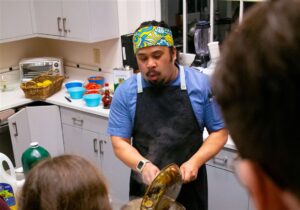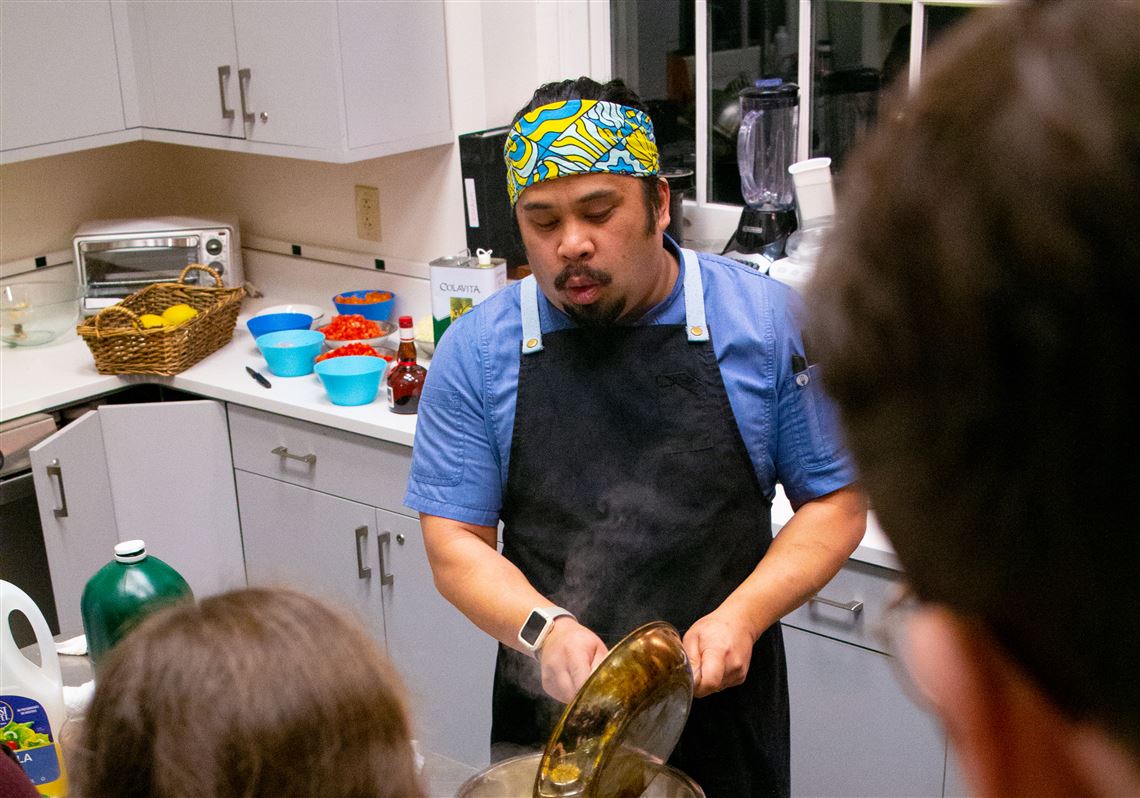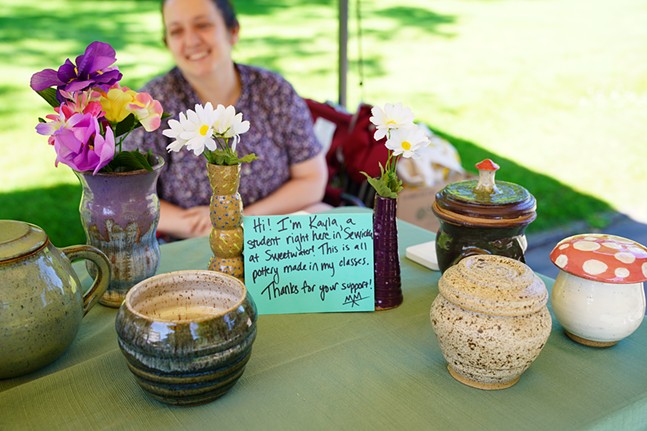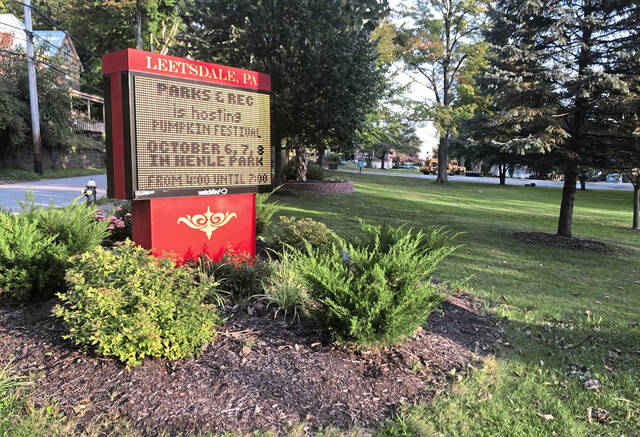
SEWICKLEY — Andrew Alvarez’s immigrant parents had high standards. From an early age, he knew they hoped a career in medicine or engineering would follow his 2004 graduation from Quaker Valley High School.
There was only one problem, and it was a biggie: Cooking is what actually fired the Sewickley native’s creative juices.
“It just appealed to my general nature, and just made sense,” he said.
What really ignited the flame was a year-long visit during fifth grade with his maternal grandparents in the Philippines, where his Chinese mother grew up. His extended family’s traditional foods became a “comfort thing” for the 10-year-old, and the various Asian cuisines and different ways of eating “really opened my eyes” to a world beyond the fast-food hamburgers, Italian-American pastas, Chinese buffets and Vocelli’s pizza he grew up on.
“My grandparents were ‘Chinoys’ (Chinese-heritage Filipinos), so I had this benefit of being exposed to both Filipino cuisines and Chinese cuisine,” he said.
Because meals are also a social affair in the Philippines, food was always connected to gatherings and great times. He remembered that as he studied culinary arts at IUP Punxsutawney.
Today, after years of cooking, planning menus and managing staff at upscale restaurants around the country, including the 4-star Peabody Hotel in Orlando, Florida, Orchids in Palm Court in Cincinnati and Or the Whale and Hotel Monaco in Pittsburgh, Alvarez is hoping to inspire others in the kitchen while opening their eyes to other cultures.
Date nights
Last November, the 36-year-old Beechview resident became the first chef to help build a culinary program at Sweetwater Center for the Arts in Sewickley. He offers a range of cultural cooking classes for teens and adults several times a week in the Broad Street kitchen, including “date night” classes for couples, all with a single mission: to use food as a medium of communication and positive reinforcement for under-represented Black and Brown communities.
Last month, he led a class on the foods of West Africa and their influence on Southern cuisine, with recipes from Nigeria, Morocco, Senegal and Ghana. He also hosted a class on American influences on the cuisines of Guam and Korea following World War II and the Korean War. During the three-hour class, students got a brief history lesson while learning how to prepare Chamorro shrimp patties, Filipino leche flan and the Korean fusion stew budae-jiigae, which is made with an intriguing and fiery mix of Spam, hot dogs, kimchi, tofu, gochujang, ramen noodles and — wait for it — American cheese.
“If you saw [these ingredients] in a friend’s pantry, you’d probably ask, ‘Are you OK?’ or ‘Do you need money for groceries?,’” he told students as they went over the hot pot recipe also known as Army base stew. “You have every right to be suspicious.”
The punchy stew is the delicious result of Korean ingenuity and resourcefulness.
Food was scarce in Guam and Korea following the conflicts, Alvarez explained as the group went over the ingredient list. Surplus rations from U.S. military bases — procured by both legal and illegal means — helped people survive, often with surprising results. The blend of American ingredients with the traditional flavors of Korean cuisine produced a dish so tasty and hearty, it soon spread to restaurant menus. Today, budae-jiigae is one of Korea’s most beloved dishes.
Chamorro shrimp patties, which are made with the evaporated milk and frozen vegetables favored by U.S. sailors, have a similar origin. An offshoot of the American fritter, they were born in post-World War ll Guam.
“They were left with all this stuff and this was an ingenious way to create a fried shrimp dish,” noted Alvarez.
Finding his place
Many culinary schools focus on classic French and Italian techniques, and cuisines from Southeast Asia and Africa are often underrepresented. It can be tough for chefs of color to make their voices heard, or to get credit for their influences on America’s culinary traditions.
Even though Alvarez has has more than a decade of experience in the food industry — he’s been everything from a line cook and banquet chef to sous chef and chef de cuisine — “you always had to say, ‘Is my food good enough?’”
He admits he made fun of his Filipino heritage as a teenager. It wasn’t until he was in his 20s that he realized his people were “cool” and Filipino food is amazing.
“It finally clicked for me that the world is a big place and I can understand it better through cooking and eating and appreciating other cultures.”
He got a taste of teaching at Gaynor’s School of Cooking in the South Side in the 2010s, and loved it, while he was a lead cook at the Terrace Restaurant in the Omni William Penn Hotel.
After working as chef de cuisine at Michael’s Genuine Food and Drink in Cleveland, he returned to Pittsburgh last year when his wife, Heather, was offered a job here. Only then did Alvarez realize he could make a bigger impact by teaching lesser-known cuisines to people eager to increase their cultural awareness.
Sweetwater calls
While Sweetwater renovated its kitchen in 2012, it was used mostly for birthday parties and summer classes for kids. So last spring the board started asking: If culinary arts is part of its artistic vision, shouldn’t it be expanded to include teenagers and adults?
Sweetwater board president Terri Tunick originally wanted him to do a fundraising series in the arts center’s updated kitchen. Alvarez told her he’d rather run an entire culinary program.
The cooking school is still in its early stages, with minimal equipment and donated utensils and supplies. But Alvarez more than makes up for any deficiencies with his unbridled enthusiasm.
“I’ll be as bold as I can be,” he said. “It’s time to put all my experience into something I’m passionate about.”
For adults and budding high school chefs, he has created a five-week curriculum focused on knife skills and basic cooking techniques. Culinary “date night” classes are geared toward couples looking to learn a skill while spending time together, and include wine with the executed menu. Prices range from $75-$85 for a single class to $175 for couples.
Upcoming courses include Foods of New Orleans on Feb. 16, and Foods of Central America and the Caribbean on Feb. 18. In the latter, students will learn the history and preparation of traditional foods such as Puerto Rican mofongo (fried plantains), arroz con gandules (rice and pigeon peas) and Jamaican goat curry.
Future classes will include a shout out to Thailand, India and other cuisines of Asian Pacific heritage. Alvarez also hopes to develop pastry and baking classes.
“What’s cool is we can be creative, which is super exciting,” he said. “Let’s learn to cook the world together.”
Information: sweetwaterartcenter.org or 412-741-4405.





